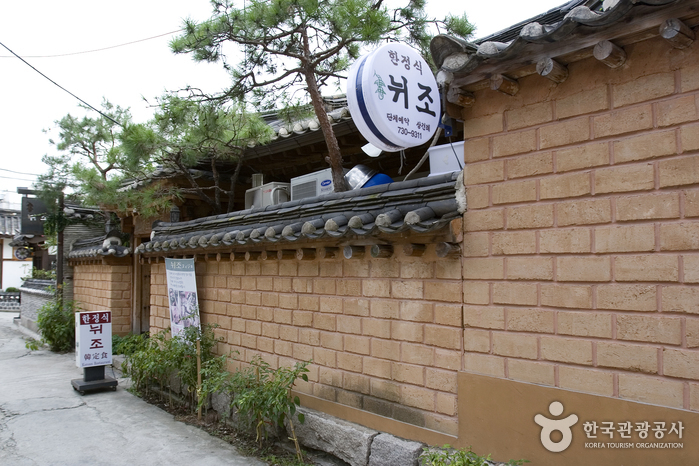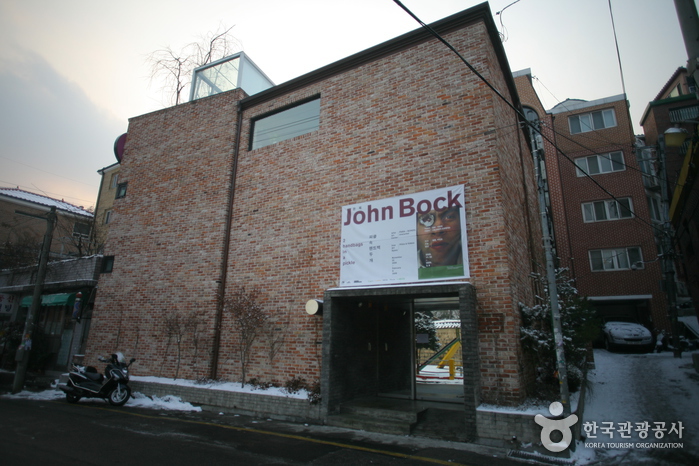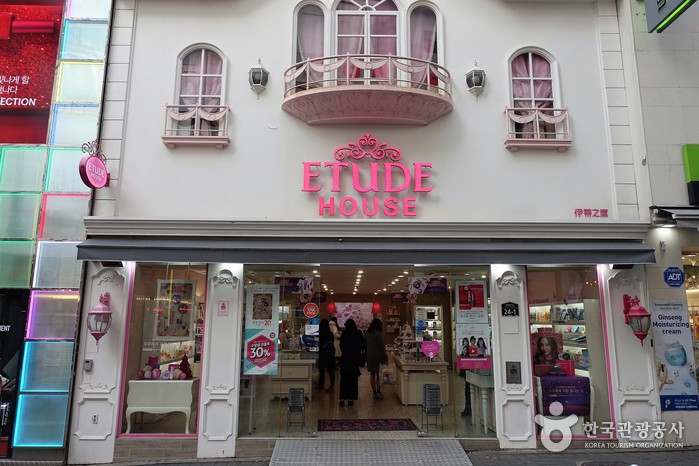Nwijo (뉘조)
3.0Km 2024-03-06
27 Insadong 14-gil, Jongno-gu, Seoul
+82-2-730-9311
Nwijo is a Korean table d'hote restaurant located in Insa-dong where you can enjoy course meals made from hundreds of wild herbs. Starting with pumpkin porridge and water kimchi, basic dishes such as wild herb salads, pancakes, kimchi with boiled pork slices, and mixed roots are served along with set menu and wild herb enzymes as a standard part of the meal.
Insa Art Space (인사미술공간)
3.0Km 2021-02-26
89, Changdeokgung-gil, Jongno-gu, Seoul
+82-2-760-4722
Insa Art Space was established in 2000 to support artists who are experiencing financial difficulties. In 2005, Art Space started to develop artistic projects and in 2006, the gallery began to provide project consultations, and publishing and marketing, to develop into a stronger self-sufficient gallery. Currently, the gallery provides special exhibitions for artists and independent curators.
Etude house myeongdong chungmuro / 에뛰드하우스(명동충무로점)
3.0Km 2025-08-11
24-1, Myeongdong 8na-gil, Jung-gu, Seoul
+82-2-777-1704
Etude House is a cosmetics brand that sells makeup, hair, and fragrance products. The Etude House Myeongdong Chungmuro Branch, located in the heart of a major shopping district, carries a wide selection of cosmetics that customers may test before purchasing. Moreover, the brightly lit store interior, designed with a princess bedroom decor, adds fun to the experience.
It is visited largely by foreign customers from Japan, Thailand, China and other East Asian countries. To facilitate an easy shopping experience, the shop always has foreign staff available to assist. The most popular items include creams made using snail extract, lipsticks and eye shadows. Etude House also has many sales on facial mask packs, and tax refunds are available.
Insa-dong Geujip (인사동그집)
3.0Km 2024-03-18
3 Insadong 12-gil, Jongno-gu, Seoul
+82-2-737-0575
Insa-dong Geujip is a hanok-style Korean restaurant located in a narrow alley in Insa-dong. Their signature dish, bulgogi yachaemari (bulgogi and vegetable roll), allows you to choose between stir-fried pork bulgogi, beef bulgogi, or chicken bulgogi. Visitors can enjoy the tangy and sweet flavor of the radish wrap filled with bulgogi and julienned vegetables, accompanied by side dishes and soybean paste stew. They also offer bulgogi nakji jeongol (bulgogi and octopus hot pot), cheolpan sogalbijjim (stir-fried marinated galbi on hot iron plate), and dolsot bibimbap (hot stone pot bibimbap) along with hahu yukhoe bibimbap (Korean beef tartare bibimbap).
Olive Young - TIMEWALK Myeongdong Branch [Tax Refund Shop] (올리브영 명동타임워크점)
3.0Km 2024-06-27
#108 and #109, 78, Namdaemun-ro, Jung-gu, Seoul
-
Innisfree - Myeong-dong Chungmu Branch [Tax Refund Shop] (이니스프리 명동충무)
3.0Km 2024-04-16
28-1, Myeongdong 8na-gil, Jung-gu, Seoul
-
Yetmat Seoul Bulgogi (옛맛서울불고기)
3.0Km 2024-03-20
57, Myeongdong, 2-gil, Jung-gu, Seoul
+82-2-779-3000
Located in Myeongdong, Yetmat Seoul Bulgogi is a Korean restaurant that specializes in Seoul-style bulgogi. It is a thinly sliced, seasoned beef sirloin cooked in a broth with onions, green onions, and mushrooms. The characteristic of this menu is that the bulgogi is mildly flavored and dipped in soybean paste to suit your taste.
57 Myeongdong Hostel [Korea Quality] / 57명동호스텔 [한국관광 품질인증]
3.0Km 2024-07-30
57 , Myeongdong 2-gil, Jung-gu, Seoul
+82-2-778-8835, +82-10-3262-3503
Located in Myeong-dong, Jung-gu, Seoul, 57 Myeongdong Hostel is easy to remember because its name is the same as its address! Just a 5-minute walk from an airport bus-stop, and a 3-minute walk from Myeongdong metro station, the hostel offers single rooms with ensuite bathrooms, and is popular with single travelers or those on business trips. Breakfast, coffee and tea are provided free, and a mini washing machine can be used without charge. The hostel is close to the Myeongdong shopping district, and is also convenient for nearby tourist attractions. Tourist information and reservation services are provided at the front desk.
Gentle Monster - Zeus Eyewear Myeong-dong Branch [Tax Refund Shop] (젠틀몬스터 제우스안경 명동(위탁))
3.0Km 2024-04-18
2F, 105, Toegye-ro, Jung-gu, Seoul
-
Zeus Eyewear - Myeong-dong Branch [Tax Refund Shop] (제우스안경 명동)
3.0Km 2024-04-22
2F, 105, Toegye-ro, Jung-gu, Seoul
-




![Innisfree - Myeong-dong Chungmu Branch [Tax Refund Shop] (이니스프리 명동충무)](http://tong.visitkorea.or.kr/cms/resource/11/2878611_image2_1.jpg)
![57 Myeongdong Hostel [Korea Quality] / 57명동호스텔 [한국관광 품질인증]](http://tong.visitkorea.or.kr/cms/resource/34/2610934_image2_1.jpg)
![Gentle Monster - Zeus Eyewear Myeong-dong Branch [Tax Refund Shop] (젠틀몬스터 제우스안경 명동(위탁))](http://tong.visitkorea.or.kr/cms/resource/15/2878615_image2_1.jpg)
![Zeus Eyewear - Myeong-dong Branch [Tax Refund Shop] (제우스안경 명동)](http://tong.visitkorea.or.kr/cms/resource/35/2878635_image2_1.jpg)
 English
English
 한국어
한국어 日本語
日本語 中文(简体)
中文(简体) Deutsch
Deutsch Français
Français Español
Español Русский
Русский